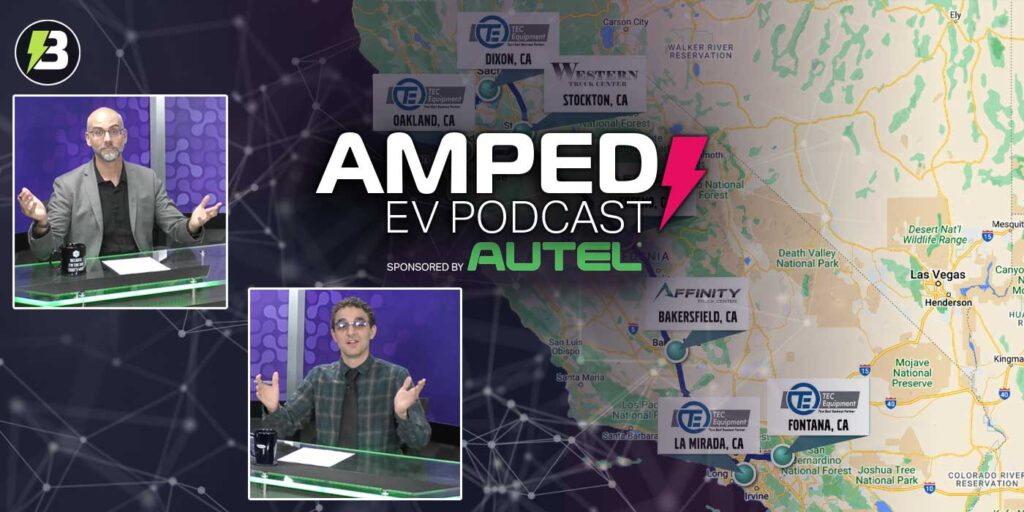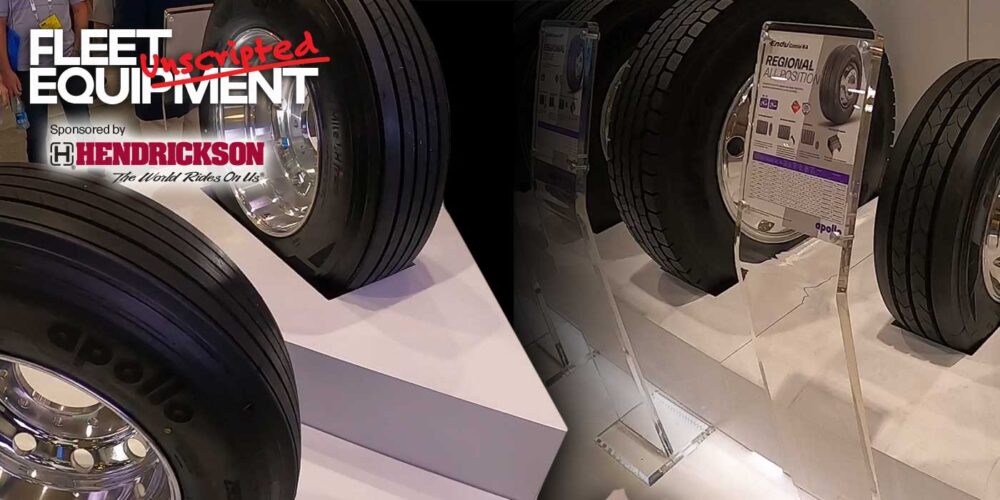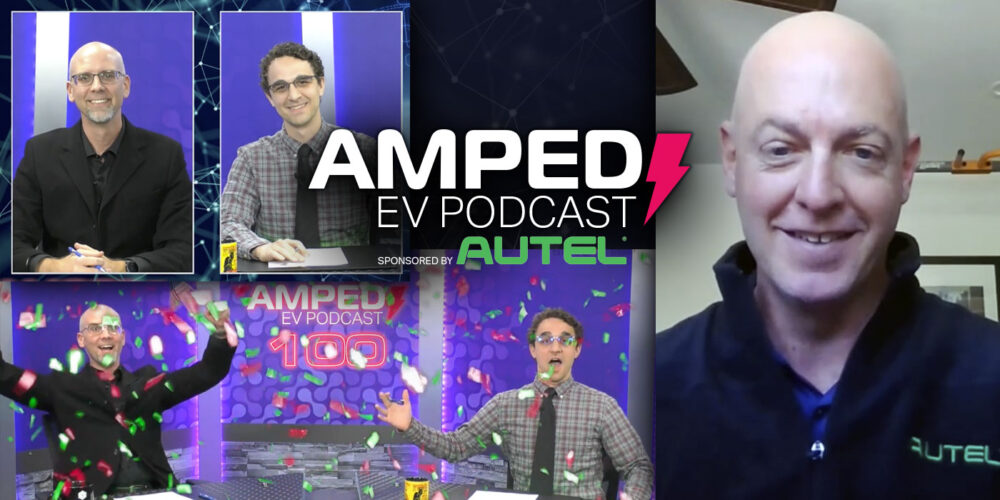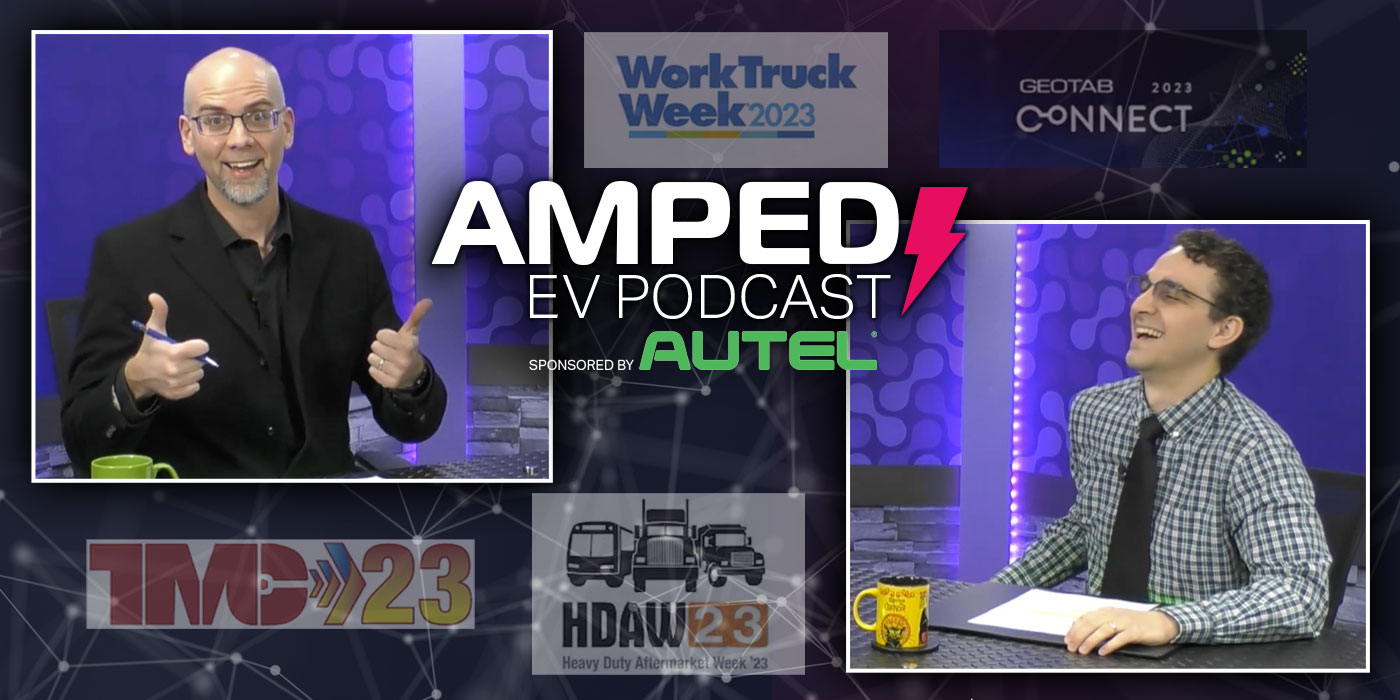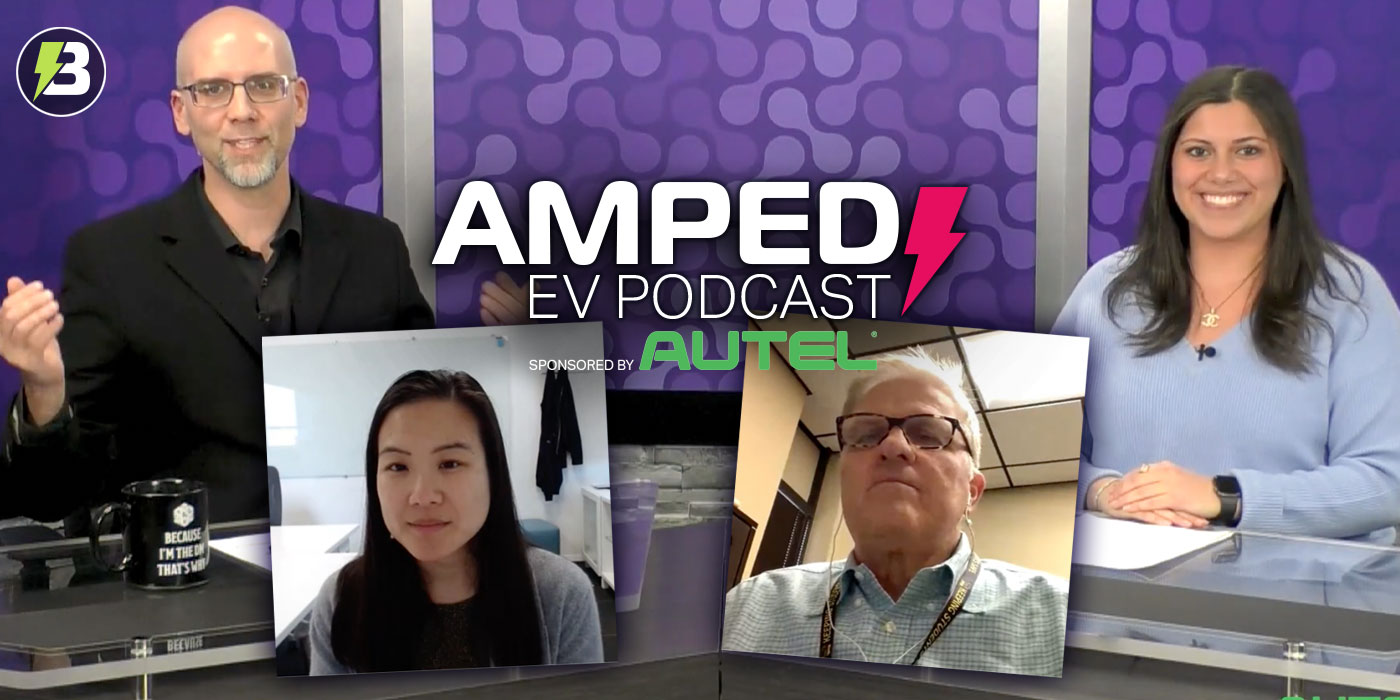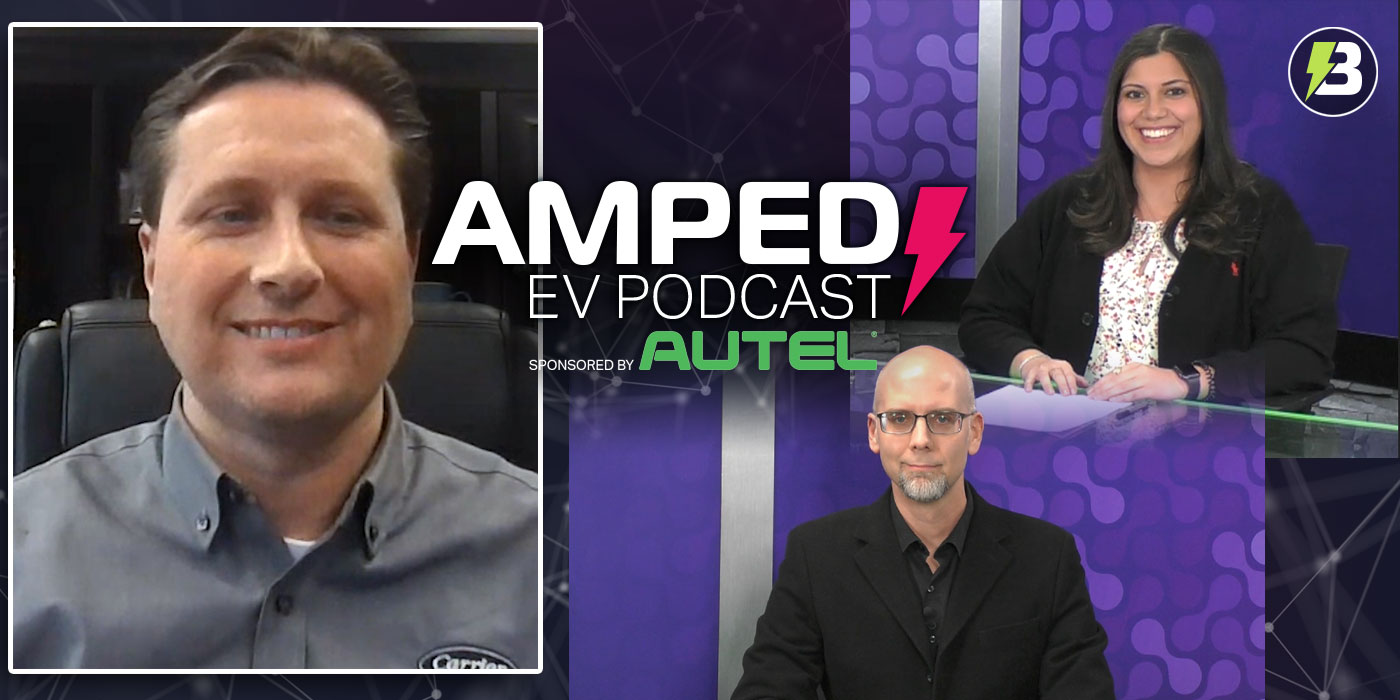There’s a moment when you’ve been working toward something where that “something” becomes very real and all the excitement you used to feel about it takes a back seat to the challenges that lie ahead. Moving forward means taking a deep breath, swallowing hard and remembering why you started down this path in the first place. Then, you plow ahead.
That moment for commercial decarbonization efforts within the trucking industry happened at this year’s ACT Expo. Sure there was plenty of excitement with a bevy of new EV announcements from new players and established OEMs, alike, as well as a few teases of what’s to come. But there was also a very clear message that trucking industry decarbonization efforts need to happen faster to gain ground on transportation’s impact on climate change.
“The U.S. has had a great improvement [in clean energy usage] since 2010, moving from 30% to 40% [to 2020], but if you look forward, the 2022 prediction by the U.S. Energy Information Administration [EIA] is that we’ll be short of 60%. So, we moved forward 10% in 10 years, and then in the coming 30 years, we have grown by 15%, 20%, it’s not good enough,” said Mathais Carlbaum, president and CEO, Navistar, during his ACT Expo keynote speech. “The Administration is talking about the targets to reach 100% by 2035, but if that is going to be a reality, we needed to start yesterday to ramp it up.”
Tom Linebarger, the then chairman and CEO of Cummins, echoed the challenges ahead in his ACT Expo keynote:
“Frankly speaking, trucking, commercial and industrial applications are measurable parts of climate change; in fact, Cummins engines alone are a measurable part of the carbon in the atmosphere. To say that we have a role to play would be a modest understatement. We have to do things proactively to change the calculus or we’re going to have some very, very difficult explaining to do. And I, personally, don’t want to be the one bouncing my grandkid on my knee to explain to them why I stood by and did nothing while the planet got hotter.”
Not many of us would want to be in that position of many fleets in the industry, and definitely nearly everyone at ACT Expo would agree with Linebarger’s next statement:
“We gotta get going.”
Want more Amped EV podcast? Click here.
Here’s a transcript of the show:
David Sickels: Hello, and welcome back to the Amped EV Podcast. My name is David Sickels, I am the editor for The Buzz.
Jason Morgan: And I am Jason Morgan, content director for Fleet Equipment. It’s good to be back. David, I have something for you.
Jason Morgan: So, something I’ve been thinking about, and happy to talk about here, but I feel like we’re at a point in electric vehicles, particularly in the commercial world, and not just electric vehicles, but zero-emission vehicles, where reality is now here in a very… Electric trucks grew up and got a job, and now they’re paying a mortgage and bills. They go to bed early, they’re not going out on the weekends anymore. They’re full-fledged adult working equipment now.
David Sickels: Do we have to talk about this?
Jason Morgan: I think so. Well, and I want to be clear, this is a good thing. I’m not looking to be a downer here, but we are going to talk about some challenges, some actual challenges. But the fact of the matter that the industry is actively working on solutions, because there are challenges in everything.
David Sickels: So, where do we start, range or infrastructure or cost or-
Jason Morgan: I think back to my time at ACT Expo, I know we did a walk around there, but Mathias Carlbaum, the CEO of Navistar, he put it in very real terms, let’s say. Can I read you a quote? This is what stuck with me, and there were two things that stuck with me.
Jason Morgan: Mathias Carlbaum, president and CEO of Navistar, said, “The U.S. has had a great improvement in clean energy usage since 2010, moving from 30% to 40% in 2020. But if you look forward to the 2022 prediction by the U.S. Energy Information Administration, it’s that we will be short of 60%. So, we moved 10% in 10 years, and then in the coming 30 years, we have to grow by 15%, 20%.” Our growth is slowing down.
David Sickels: Yeah. We’re plateauing a bit.
Jason Morgan: Right. We are plateauing a little bit. Of course, he then points to just government assistance and some tailwinds there to help get through there. Clearly, Navistar is investing a lot. They have their International eMV electric vehicle, they’re working on hydrogen with a couple partners, particularly GM on that side of things. But there was just a lot of that kind of talk in very real terms. David Carson, the senior vice president of sales & marketing for Daimler Trucks North America, had a keynote. One of his takes was that if you go to any truck stop, let’s say we electrified truck stops, and 50 trucks plug in to charge, it’ll take down any grid in the country.
David Sickels: Oh no.
Jason Morgan: Yeah. That is not something we want to happen. So, these conversations were happening, but the idea that we’re working towards solutions. The other reality is that we talk a lot about solutions, you and I talk a lot about, that don’t even exist yet. We talk in very high terms about hydrogen and da, da, da, but it’s not there yet. We’re moving toward it, we’re moving toward it. So, just wanted to chat about the realities. Are you seeing any realities creeping in to the EV space?
David Sickels: All the time, all the time. Again, I don’t like to talk about them, because they can get a little depressing, but-
Jason Morgan: Reality is hard.
David Sickels: But that being said, it’s something that you do have to face. You have to face the music sometimes. And if you really want to come up with the correct solutions or solution that’s at least close to correct, you have to know what you’re actually looking at. We actually got, today, as we’re recording this-
Jason Morgan: Yes. Well, I got something for today. I don’t know if we have the same thing.
David Sickels: Oh no. Are you talking about the Mission Possible Partnership report?
Jason Morgan: No, I’ve got something different.
David Sickels: So, Mission Possible Partnership, they call themselves an alliance of climate leaders focused on supercharging efforts to decarbonize some of the world’s highest emitting industries in the next 10 years.
David Sickels: So, this group, they are being backed by [inaudible] with this report, and they have some ideas as far as getting infrastructure where it needs to be in order to bring our global temperature down one and a half degrees Celsius by 2050.
Jason Morgan: Oh, bring it down?
David Sickels: Bring it down. So, here are a couple of their notes within the report. They believe that zero emissions trucks will achieve superior TCO between 2022 and 2033.
Jason Morgan: Oh, that’s soon. That’s soon.
David Sickels: It’s not that far off. It’s really not.
David Sickels: Achieving zero emissions trucking is cheaper than continuing to burn fossil fuels, they say. Higher vehicle costs will be more than recouped through lower operating costs. Policy is a huge one. We’ve got to be aligned in our policy, especially here in the US. They are hoping that with the correct strategies, we could prevent a cumulative of between 6 and 13 gigatons of CO2e emissions. How much is that, really? I have no concept whatsoever.
Jason Morgan: It sounds like a lot.
David Sickels: It sounds like a lot. And finally, they are saying that operators need more public charging and hydrogen stations. Their biggest concern is having enough grid power for both charging and hydrogen production, simultaneously.
Jason Morgan: Right. Well, that’s good. Was that breaking news?
David Sickels: That was. That was breaking news as we record this episode today, on July 14.
Jason Morgan: Right, so you’ve probably read about it on The Buzz.
David Sickels: It’s possible.
Jason Morgan: Well, I’m going to break some news then, that you will also have read about, but right now, it’s new. Breaking news. So, Volvo Trucks announced that Volvo Trucks North America itself, and several of its groups, so we’ve got Volvo Financial Services, they’re the ones that fleets go through funding to pay for their electric trucks and all that good stuff, Volvo Technology of America, plus Shell Recharge Solutions. We saw this at ACT, this is Shell’s EV charging arm, so it’s actually separate from the Shell you would think of for oil.
David Sickels: Yeah. Shell is really big into electrification and decarbonization these days.
Jason Morgan: I just talked to the CEO and global head of Shell TapUp in a different interview 30 minutes ago, but that’s neither here nor there. But yes, decarbonization is a thing they’re really focused on. Tech equipment, which was a big supporter of the Volvo LIGHTS project and servicing VNR Electric trucks that they have on the road right now. So, tech equipment, affinity truck center, western truck center. They are going to develop a publicly accessible, medium- and heavy-duty, electric vehicle charging network, basically, a corridor in California for electric vehicle charging, all the way down California there in Southern California. The project will start this year, five stations are anticipated to be online by the end of 2023, all a big deal. So, they are getting an award from the California Energy Commission of 2 million under the BESTFIT program, which is one of these programs that funds this stuff, so they’re pulling together to do this. And again, I know we’ve talked about it before, but a reminder that Daimler Trucks North America, NextEra Energy Resources, BlackRock Renewable Power, they have $650 million invested, or that they will invest, in a California, Texas, and East Coast charging infrastructure plan that they’re rolling out. So, again, I know we talked about it, there’s stuff happening. It’s happening right now. We just did it, breaking news.
David Sickels: That’s pretty great.
Jason Morgan: Yeah, it’s exciting.
David Sickels: So, what does that mean for the trucking corridor down the coast of California? What are they hoping to accomplish with that?
Jason Morgan: Well, they just want to be able to charge their trucks, quite frankly, in a real way that is available and accessible, because let’s face it, a lot of this… I’m going to say this, but the majority of electric vehicles, especially in the commercials, happen in California, but it is happening all over the world. There are Texas fleets. There are fleets up in Canada that we know of that are running electric vehicles and electric trucks, so it’s happening all over. But California is its own… That’s where a mass population of more and more EVs are heading. So, they just want to be… Again, infrastructure is the challenge, but again, it’s being addressed with really cool solutions.
David Sickels: That’s exciting to hear. It’s happening in California, obviously, as you said, California is one of the meccas for electric vehicles in the States here. What is more exciting is seeing this kind of infrastructure project happening elsewhere, quite frankly. As you said, as well, infrastructure is one of the biggest realities that we need to face and figure out solutions for. The researchers at mckinsey.com, they do a lot of market research, market data kinds of things, and they have this, I’m just going to read this word for word here.
David Sickels: They say, “As the number of EVs on the road increases, annual demand for electricity to charge them would surge from 11 billion kilowatt hours now to 230 billion kilowatt hours in 2030. The demand estimate for 2030 represents approximately 5% of total electricity demand here in the United States. Projections indicate that nearly 30 million chargers would be needed to deliver so much electricity in that year.” 30 million. Now, they do say that a lot of those chargers would be those that are residential, in your garage or whatever that might be. But that being said, that is an enormous number that we are nowhere close to meeting right now.
Jason Morgan: Can I throw a deal carbonization wrench in there? I don’t even know if it’s a wrench.
David Sickels: Yes, you may.
Jason Morgan: Because that’s electric vehicles and that’s the grid and look, in our segments in transportation, on passenger and commercial vehicle, they’re doing it, they’re moving forward. I know the grid. That’s not really our world or wheelhouse to talk about in terms of what’s happening with the utilities. You’ve got some that are really good and progressive and moving down there, and you have some that are sticking to their tried and true business model. But one of the other realities that’s emerging now is this idea of a larger view of decarbonization, so cutting down on emissions. Cummins, during one of the keynotes, had a really interesting chart that showed, “Look, if we just sit around and wait for the right solution, I’m going to wait till the infrastructure’s in place. I’m going to wait.” They equated it to compound interest, where if you wait and don’t do anything today about your decarbonization, we’re actually worse off than if you wait 10 years and then go all EV. The amount of emissions that you create in that time isn’t really helping, so you’ve got to do stuff now to cut down on emissions, still using ICE engines. I know we talk and get very excited about this and it is gaining ground, but everyone is still operating internal combustion engines. So, this idea that you have to find a solution to decarbonize and then when you take another step, because I visited with the Cummins team not too long ago here, about a month or two ago, to get an inside look at what their product development and how they’re looking at a fuel agnostic. It’s kind of funny. I have a video, I’ll have to share it with you. But I went to Cummins and drove everything but a diesel engine, which is just funny.
David Sickels: That is funny.
Jason Morgan: They’re looking at fuel in a agnostic, gas, natural gas, hydrogen, ICE engines, hydrogen fuel cells, battery electric drive, so they’re looking at all that. But it’s the idea of when you start talking about this, you get very caught up in trying to pick the winner. Like, “Well, I want to pick the winner. I’m going to wait for hydrogen, because hydrogen’s going to be the winner,” or, “I’m going to wait for EVs, because EVs going to be the winner, or natural gas is going to be the winner.” There’s not going to be one winner. There’s not one winner. The winner is whatever fuel source decarbonizes, brings your emission loads down, and still works for your ROI so that your business makes money, that’s the winner. And so, this idea that there’s going to be a proliferation of many different fuel types as we move toward that 2050 goal, even with that group of reducing, it’s not going to be one solution. The winner is going to be whatever wins for you, not this overarching, “Ah, I picked the winner. Good for me. Let’s join the club.”
David Sickels: We talk about on Fleet Equipment a lot, one of the golden rules of running a fleet, or the trucking industry, in general, is it’s all about your application, and everything is dependent on that application. Maybe an electric powertrain is correct for one application and maybe hydrogen is correct for another application.
Jason Morgan: Right. Or maybe different decarbonization efforts, turning over more of your fleet for newer trucks that are more fuel efficient, because when we talk about fuel efficiency, all the OEMs compare their last best spec to the new spec. But you’re trading in a five-year-old truck, not your best spec truck, so you’re not saving 4 or 5%, you’re saving much more on fuel efficiency, that counts as decarbonization. I teased the interview with Shell TapUp, that was a mobile fueling solution. So, they’re just bringing fuel to you, so that you don’t have to drive extra miles to go fill up. And it can help with, I know it’s not fun to talk about, but fuel fraud, because they’re filling up, you know who’s filling up, you have a relationship with them.
David Sickels: Oh yeah. Okay.
Jason Morgan: It’s not like one of your drivers has a fleet card that they’re fueling up and then there’s another guy behind them that they just go through. It happens, sorry, it happens. Again, realities.
David Sickels: Reality.
Jason Morgan: We’re talking realities, let’s face it all together. But the idea that you need to do something now, it’s not a, “I’m going to wait and see who the winner is.” No one’s going to win if you do that.
David Sickels: Sure, sure. Well, let me share one last market study that I was looking at, speaking of realities, and this is a hopeful reality, if you will.
Jason Morgan: Good.
David Sickels: So, this is from the U.S. Department of Energy. They just released their 2022 U..S Energy and Employment Report. So, this is not something that’s going to reflect exactly, “Oh, electrification is doing this well,” or, “Fossil fuels is doing this well,” but it is a very good indication of where people are spending their time and researching and trying to advance things. So, in this report, this is mainly looking at between 2020 and 2021, we don’t have 2022 numbers yet. But they share that in the motor vehicle and components parts category of the energy sector, the sector employed just over 2.5 million people in 2021, an increase of 9.8% from 2020. That being said, the fuel sector, the fossil fuel jobs had a decrease of a little over 29,000 jobs, or 3.1%, from 2020 to 2021.
Jason Morgan: Interesting.
David Sickels: Whether or not you think that’s a good thing or not is up to you, but the point is that a lot of people are moving themselves toward those cleaner energy jobs and away from the fossil fuels. One other thing that I wanted to mention, those jobs in carbon-reducing motor vehicle jobs grew a collective 25% in 2021, and hydrogen led the pack in terms of percentage of jobs added, at 41.4% year-over-year. Not a ton of jobs overall 4,160 they reported, however, that bump, we’re talking about 41%, that’s significant.
Jason Morgan: Yeah. When you start considering the market sizes and the industry size and that kind of growth, percentages can be deceiving, but it does indicate a directional trend there.
Jason Morgan: You know what? I know we’re talking about realities, but I will say that I am Amped about the reality of zero-emission EVs going forward. And it’s good that we’re getting away from the hyperbole. I think there’s a lot of buzz about EVs before their launch. I think in, well, I guess 2020 and 2021, for sure, especially on the truck side as they rolled out, it was like, “Okay, okay.” But to understand that they can do the job, they will do the job, and now they have to buy a house and support a family and grow up and become a mature technology. These are things we have to talk about and it’s cool to see the conversation heading that way.
David Sickels: Oh yeah, absolutely. And if I can just mention that Cummins hydrogen hybrid engine that you talked about during our ACT Expo episode.
Jason Morgan: Yeah.
David Sickels: Technology like that is incredibly exciting for me. It’s something that I never would have really fathomed and it’s really fun to see things moving in that direction, and people just trying different things.
Jason Morgan: Right. Well, and you’ve got to keep in mind, Cummins’ engines power a lot in the world that… Think of giant tankers that are moving containers across the ocean, they probably don’t have anywhere to charge out there in the open ocean, they probably need a solution. So, those kinds of things and whether they work for trucking or work for cars, these are the things that are happening and where the money’s going, so really interesting. A lot to talk about, a lot to be amped about.
David Sickels: I am in. I’m in for this. That was fantastic. Thanks for stopping by, once again.
Jason Morgan: Always.
David Sickels: Thanks for joining us. We’ll see you next time.

